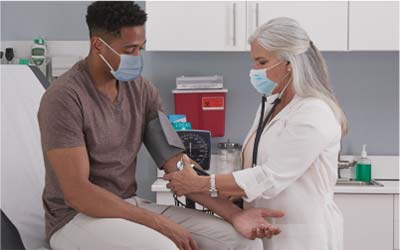8 Ways to Improve Brain Health
Do you find it hard to commit to working out regularly, only to see minimal results when you look in the mirror? Don’t give up. Taking small steps to improve your health makes more of an impact than you know. It improves what’s on the inside, including your brain.
As the most complex organ in the body, the brain regulates much of what you do every day – walk, talk and breathe. It controls your thoughts and memories, which have been known to fade with age.
You may not be able to see the improvements in a mirror, but it’s never too late to start taking care of your brain to help avoid disease and memory loss. Think about how easy it can be to improve brain health with these eight tips.
 Exercise regularly. (30 min./day, 5 days/week) |
 Manage stress and anxiety. |
 Get enough sleep. (18-60 years: 7 or more hours per night) |
 Watch your blood pressure. (Normal: Less than 120/80 mm HG) |
 Maintain a healthy diet. |
 Keep your brain active. (With puzzles, reading, drawing, etc.) |
 Stay away from tobacco. |
 Limit alcohol. (2 drinks/day for men, 1 drink/day for women) |
The best part about improving brain health is that these lifestyle changes can also make a major impact on your overall health. Get your head in the game, and take the steps needed to build a healthier future.
If you have any questions or need guidance on the best ways to improve your overall health, please schedule an appointment with your doctor.
Your safe care is our #1 priority.
Sources:
American Association of Neurological Surgeons
Healthline
Centers for Disease Control and Prevention
American Heart Association
National Institutes of Health
Harvard Health Publishing

